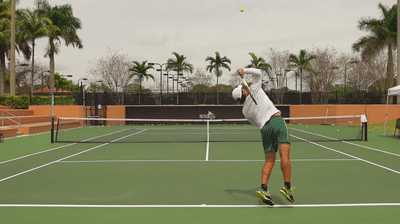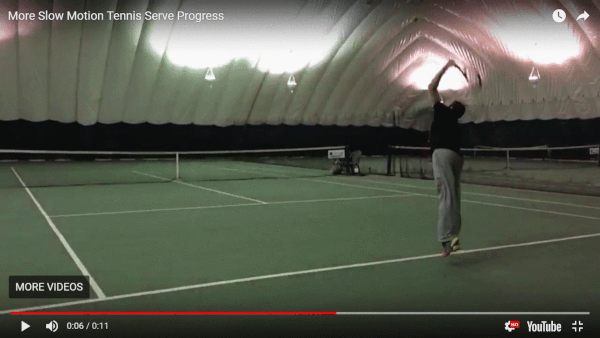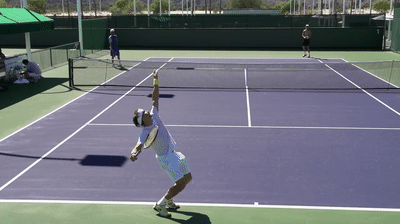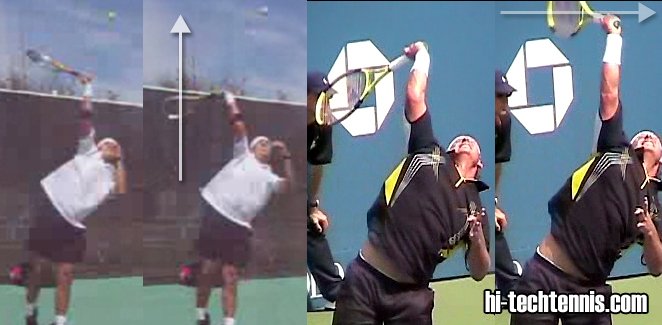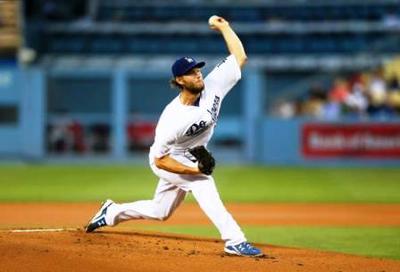Not a waiter's tray.
All serves that open too soon are not waiter's trays. The WT is a fundamentally unsound motion, one important factor in which resembles a waiter holding a tray. But at the center of it all, it is a horribly incorrect throwing motion coupled with a grip that keeps the face open throughout the motion. It's a mechanical issue, poisoning the throwing motion part of the serve. With a WR, that throwing motion is too overhead, and uses the arm and shoulder to power the motion. This means that if you're going to see any ISR at all, you're going to have to force it, which makes it even worse. When you swing this way (reaching overhead), a forehand grip brings the racquet squarely up to the ball, and brings the racquet up to that point in a straight line. It goes from racquet drop, to waiter's tray, to square contact. It has to, because that's how the shoulder moves when you're holding it too overhead instead of using proper throwing mechanics.
THAT'S the waiter's tray error. Not what David Ferrer is doing on his serves. Not what "help my 134 mph serve" guy is doing.
They both have different flaws or inefficiencies, and those issues are not hard to spot, and they're very fixable. But this hyper-fascination with this one problem, when you guys (Chas in particular is at fault here) don't really know what it is, is just going to set people back.
134 mph guy is hitting too forward, and too flat. But is doing it with otherwise excellent mechanics. Those things necessitate square contact, which happens inevitably as a result of a good motion used incorrectly, rather than because the motion itself is inherently flawed. Attempting to fix what a misguided coach perceived as his, "waiter's tray error," would lead him very far astray from the correct fix, which has entirely to do with his contact point and swing path, and nothing whatsoever to do with his motion or mechanics.
 Does that make sense and do you think this may work?
Does that make sense and do you think this may work?





